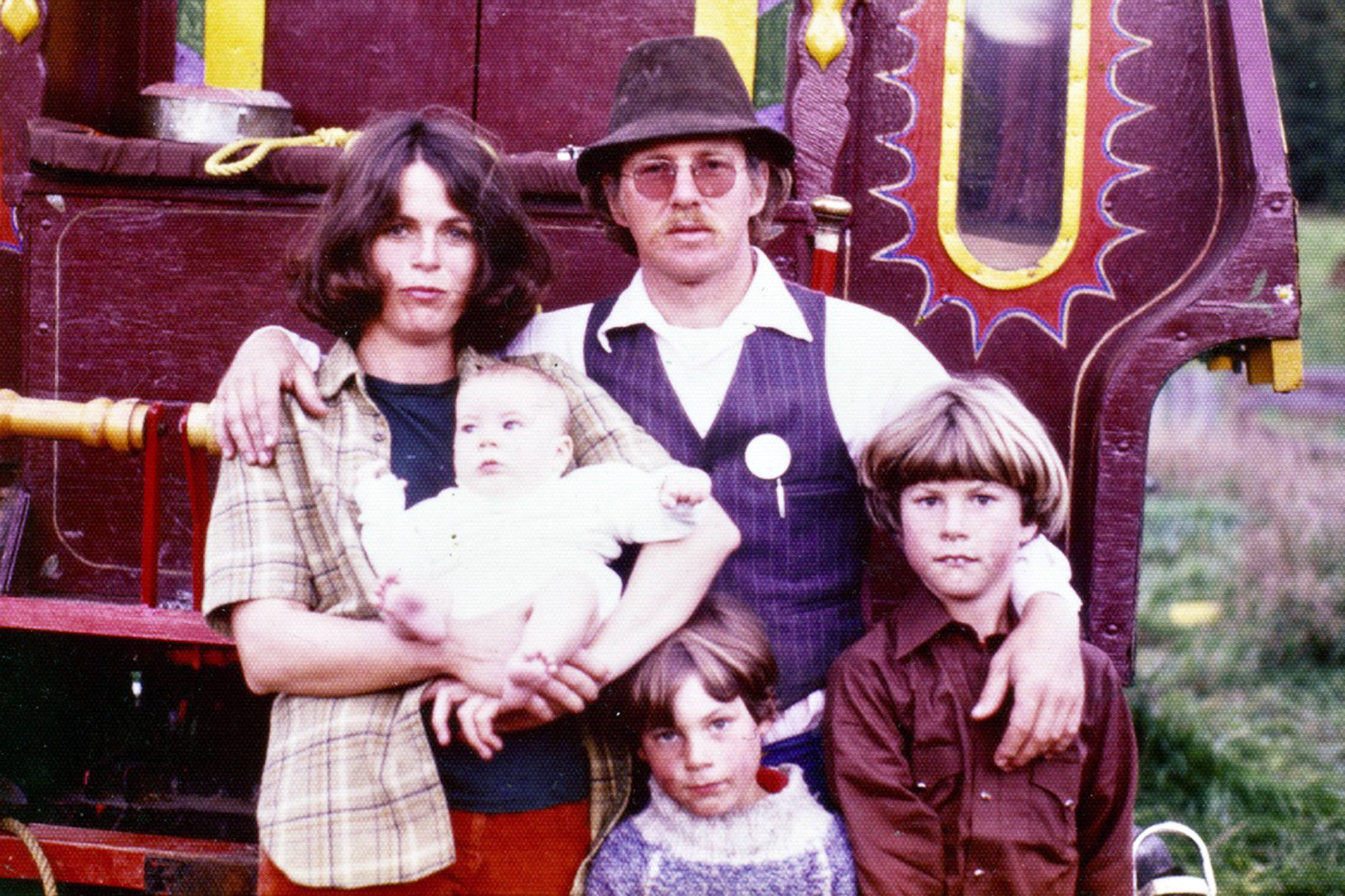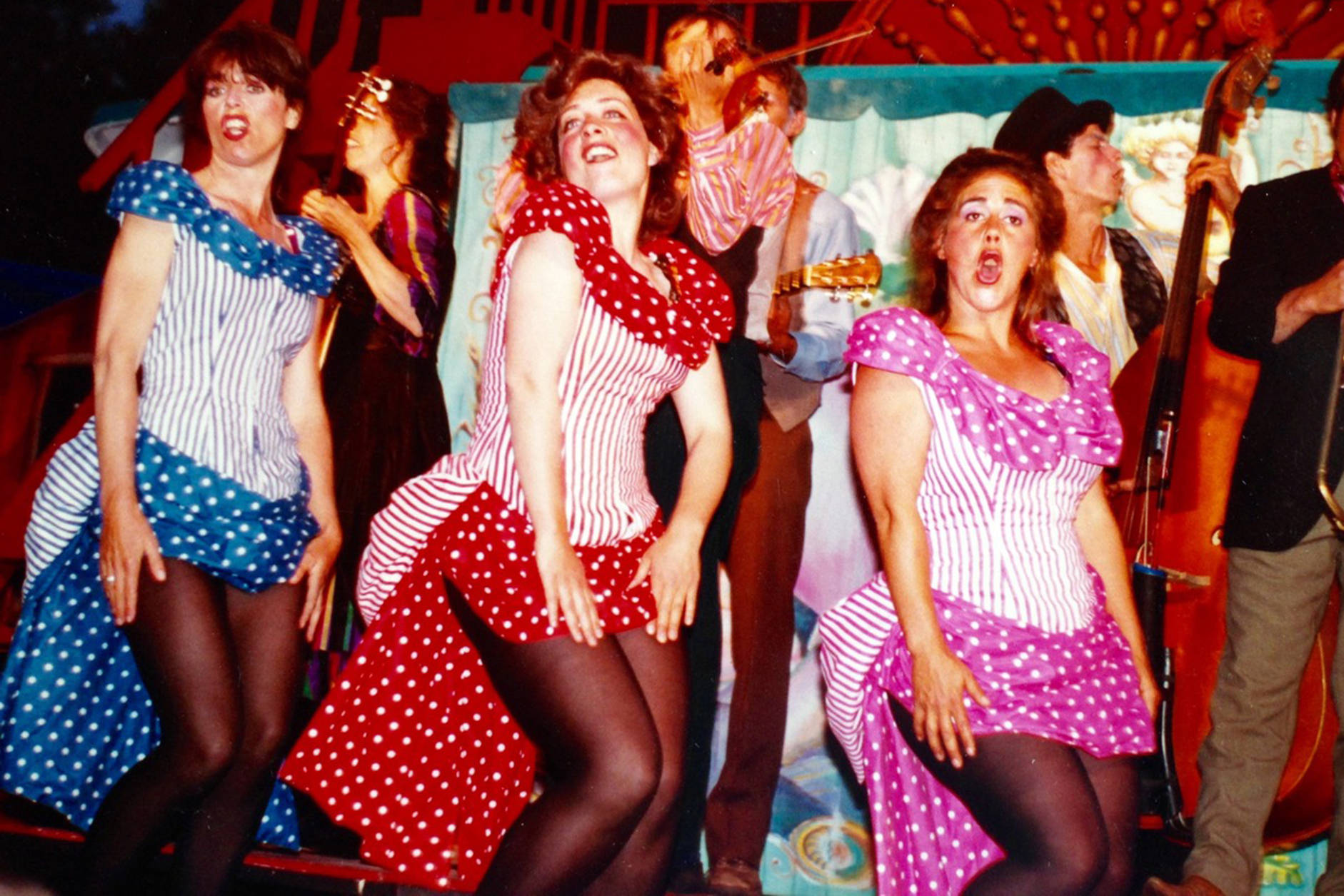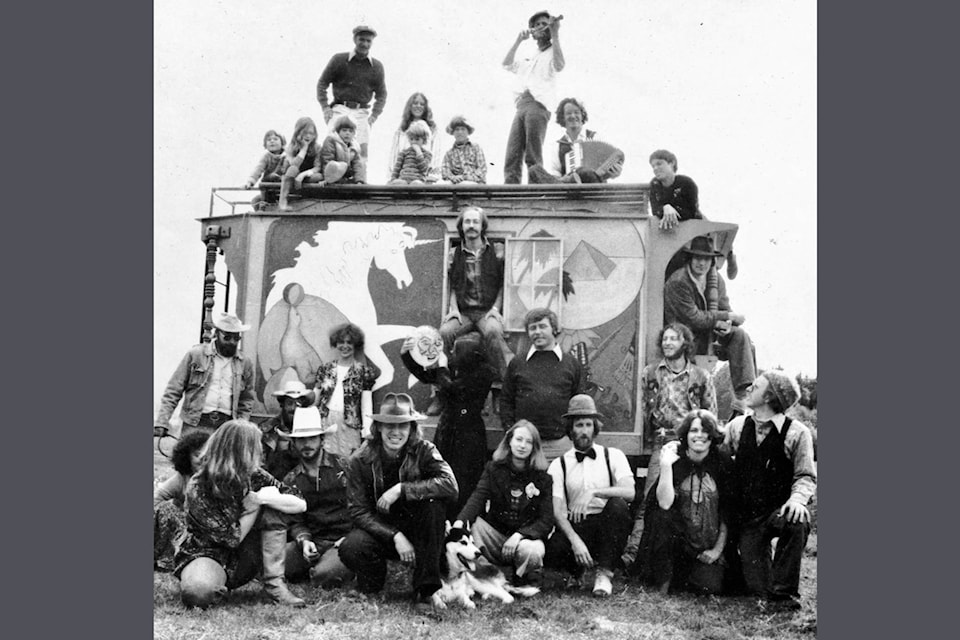It was 2 a.m. in the late fall of 1973.
Paul Kirby and Nans Kelder, with three other adventurers, were alternating riding and leading their Clydesdale horses up the old railway trail to the Coquihalla Summit, while hauling their possessions in crude pole Indigenous-style travois, when suddenly they saw lights.
An old trapper welcomed them into his cabin and gave them a safe place to camp for the night. They were heading to the Shuswap and their two wagons had been hauled ahead on a trailer, courtesy of the town of Hope, where they had performed their puppet theatre in exchange.
During their formative years in the ’60s, Paul and Nans were living in Montreal, where they were part of a community that produced an underground newspaper and performance art pieces. They lived communally, which became the basis for the style of life they still live now on their theatre ship, the Amara Zee. In 1969 they moved to Victoria, then Sooke, where they performed puppet shows and developed the concept for a traveling troupe that uses wagons pulled by draft horses. In 1970, they formed first The Little People’s Caravan, then the Caravan Stage Company.

Their charisma and unique style attracted a following that included more than 30 young people who joined them during a winter spent at a former mink farm in Sooke on Vancouver Island. The first wagons they built were a failure as were a few of the horses that were wild and unbroken. They persevered and, two years later, they toured the island with their first reliable wagon pulled by a team of bay Clydesdale mares. By 1973, they had two wagons and three young children when they began their trek that led to the Interior of the province, performing along the way.
Read more: Caravan postpones summer show as Okanagan theatre takes a loss
Read more: Spallumcheen theatre group plans for socially safe winter show to go on
It was close to winter by the time they arrived in Merritt where they were welcomed by the Coldwater First Nation to camp on their reserve. They managed to keep warm in their wagons with their stoves heated by firewood they cut by hand with bucksaws. Chief Gordon Antoine visited them often, enjoying their camp coffee outside by a roaring fire. During this down time, Paul and Nans wrote their plan for the future, a 50-page treatise entitled “Equapolis” that was the blueprint for a cooperative and sustainable farm community run by horsepower and focused on avant-garde, traveling theatre.
A number of musicians, actors and helpers joined them during their tour in the summer of 1974 as they traveled to Salmon Arm where they spent the next winter at Yankee Flats. As the word spread about their amazing outdoor traveling shows, their theatrical collective grew larger. In 1976, they switched from puppet shows to original theatre with their first production, “Stag King.” By the next season, the troupe included many who became long-term Caravaners, including Nick Hutchinson, Molly March, Peter Hall, Michelle Carriere, Catherine Hahn, Sue Kyle, Alan Bates, Peter Anderson, Doug Saba and Paul White.
In 1977, they produced the show that truly helped to make them famous, the historical musical “Hand’s Up”, which was the story of the famed Kamloops train robber, Bill Miner. The following year they performed the much loved “Coyotes,” which was re-staged by the Caravan Farm Theatre in 2019. This was also the year they finally found a farm to own, which they were able to purchase using Paul’s inheritance for the down payment. True to their ideals, the farm’s deed was registered under their newly formed Bill Miner Society for Cultural Advancement, so that everyone who was part of the company was also a co-owner of the farm located in the hills above Silver Creek, just inside the boundary of the Shuswap watershed.
Once they returned home from the 1978 tour of Alberta, their first tasks were to build the structures they needed for both homes and to produce their shows. Unfortunately, during the tour, the existing barn burned down along with a wide variety of farm equipment they had collected over the years and a crop of hay. Within in a year, with help from many locals who donated their labour and funds, they built a new barn and scene shop, a cook shack and a home for Nick and Molly. As well, another log cabin built by horse-logger poet Lorne Dufour, who traded it for a horse, was moved to the farm.
Over the next few years, the Caravan produced shows that traveled during the summer throughout B.C.’s Southern Interior, Alberta and across the border to Washington, Oregon and California, while the farm was used to breed Clydesdale horses. Despite many long meetings at the farm, there remained an impasse over a proposal to become a land trust. Finally, in 1984, Paul and Nans left the farm with the wagons, as they preferred the life as nomadic performers rather than having to negotiate the compounding problems of running a property. And then, the new era of the Caravan Farm Theatre began.
Like us on Facebook and follow us on Twitter
Sign up for our newsletter to get Salmon Arm stories in your inbox every morning.

